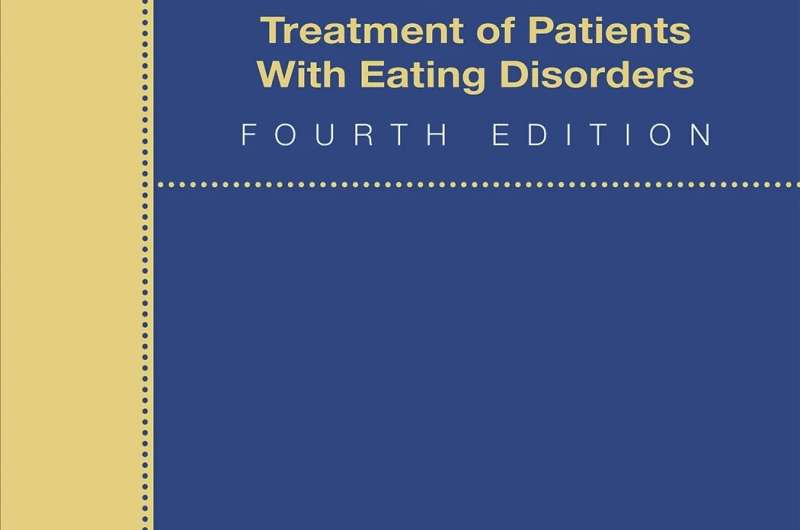This article has been reviewed according to Science X'seditorial processandpolicies.Editorshave highlighted the following attributes while ensuring the content's credibility:
fact-checked
peer-reviewed publication
trusted source
proofread
Updated guideline on eating disorders and accompanying implementation tools

The American Psychiatric Association (APA) recently published an updated practice guideline for treatment of patients with eating disorders. The guideline provides recommendations on assessment and evidence-based pharmacological, psychotherapeutic, and other nonpharmacological treatments for eating disorders. The Practice Guideline for the Treatment of Patients with Eating Disorders focuses primarily on anorexia nervosa, bulimia nervosa, and binge-eating disorder and includes new tips for screening and treatment.
The lifetime prevalence ofeating disordersin the U.S. is approximately 0.80% for anorexia nervosa, 0.28% for bulimia nervosa, and 0.85% forbinge-eating disorder, although estimates can vary. Eating disorders often begin in adolescence or early adulthood and can persist for decades with significant psychosocial impairments.
The practice guideline includes 16 clinical recommendations or suggestions, depending on the level of scientific evidence, including:
- Screening for the presence of an eating disorder as part of an initial psychiatric evaluation.
- Conducting comprehensive patient evaluations, includinglaboratory testsand electrocardiograms.
- Ensuring the treatment plan is patient-centered and culturally sensitive.
- Setting individualized weight goals for patients with anorexia.
- Treating patients with anorexia, bulimia, and binge-eating disorders with eating-disorder–focused psychotherapy.
- Incorporating family-based therapy as part of a treatment plan for adolescents with anorexia or bulimia.
Discussion of assessment and treatment of avoidant/restrictive food intake disorder (ARFID) is included; however, recommendations are not included due to limited availability of clinical research data.
"Eating disorders often are unrecognized and untreated," noted Catherine Crone, M.D., chair of the guideline writing group. "This guideline and supplementary resources are intended to serve as a practical tool for clinicians, to help with screening, diagnosis, and providing evidence-based treatment for eating disorders."
The release of this new practice guideline comes at an important juncture for people with eatingdisorders. Studies have reported upticks in individuals developing symptoms of and requiring hospitalization for disordered eating since the start of the COVID-19 pandemic in 2020.
Eating disorder guideline resources
The guideline provides direction on implementing the 16 clinical recommendations into practice. To facilitate understanding and its implementation, APA has developed a series of resources and tools, as outlined below. All are freely available to practitioners and the public.
Additional materials that will be available in the next few weeks include: an Interactive Toolkit (with screeningassessmentcalculator, quantitative assessments, anddiagnostic criteriaand management recommendations) and a Pocket Guide for Patients and Families.
More information:The American Psychiatric Association Practice Guideline for the Treatment of Patients With Eating Disorders,(2023).DOI: 10.1176/appi.books.9780890424865
Catherine Crone et al, The American Psychiatric Association Practice Guideline for the Treatment of Patients With Eating Disorders,American Journal of Psychiatry(2023).DOI: 10.1176/appi.ajp.23180001
Nick Zagorski, APA Releases Updated Guideline for Treating Eating Disorders,Psychiatric News(2023).DOI: 10.1176/appi.pn.2023.02.2.8
Brittany Matheson et al, Special Report: Youth With Eating Disorders—Time Is of the Essence in Achieving Remission,Psychiatric News(2023).DOI: 10.1176/appi.pn.2023.02.2.16















